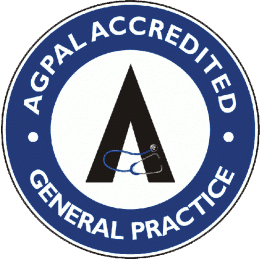Skin & Medical Northbridge is affiliated with Australia Clinical Lab (ACL) to provide comprehensive skin cancer laboratory services for accurately diagnose and assessment of skin biopsy analysis and excision histopathology evaluations.
The dedicated skin cancer Pathology Team at Australian Clinical Lab have access to advance testing technologies to assist in providing definitive diagnosis. Our doctors at Skin & Medical Northbridge have direct access to the specialist skin cancer pathologist team for all clinical enquiries and personalised consultation and direct communication for complex cases and melanomas. Australian Clinical Labs also provides a fast turnaround for most biopsy results.
Before attending the clinic for skin check, please consider the following simple steps:
- Ensure that your skin is clean and free from any makeup, lotions, or oils. Remove any nail polish
- Avoid wearing tight-fitting clothing that may be challenging to remove for a thorough examination
- Prepare to ask your doctor about any skin lesions that raises concerns
- Prepare to answer questions about your medical history and list of medications
- Prepare to answer questions about family history especially about skin cancer and the type
- Delay the skin check for about two weeks if you have had a sunburn or suntan
Skin check consultation is no different to any consultation with your GP. The consultation usually included the following:
- Review of any potential risk factors for skin cancer
- Review of previous history of skin cancer and previous biopsy results
- Review any underlying medical history, medications and allergy list
- Review of occupational hazards and occupation related risk for skin cancer
- The doctor will also ask about any concerning lesions
- The doctor will then proceed with examination of the body for skin cancer, usually with the assistance of dermatoscope equipment.
- You have an option not to proceed with full body examination, and only examine specific concerning lesions.
- It is likely that you will be ask to remove majority of your clothing
Upon completion of skin check examination, the doctor will:
- Discuss any potentially concerning lesions
- Discuss any need for biopsy of lesions for specific diagnosis
- Discuss any need for excision or other options of non surgical therapy
Our team will provide you with detailed post-procedure aftercare instructions to promote proper healing and minimise discomfort. It is essential to follow these guidelines and contact us if you have any concerns or questions.
Following shave biopsy or excision:
- This procedure is minor as it only involves removing the superficial layer of skin.
- The wound is usually covered by a simple wound dressing.
- Occasionally there is may be a crepe bandage wrapped the area to reduce bleeding.
- Pain should be minimum, but pain relief can be achieved by using paracetamol
- The dressing should be kept on for 3 days while keeping the wound as dry as possible
- After 3 days, the dressing can be removed and replace with simple band-aid as required
- The procedure has a low risk of bleeding or infection.
Following a punch biopsy:
- This procedure is minor but it involves a punch wound in the skin
- The wound is usually covered by a simple wound dressing.
- Occasionally the wound may be required to be sutured with one suture
- Occasionally there is may be a crepe bandage wrapped the area to reduce bleeding.
- Pain should be minimum, but pain relief can be achieved by using paracetamol
- The dressing should be kept on for 3 days while keeping the wound as dry as possible
- After 3 days, the dressing can be removed and replace with simple band-aid as required
- The procedure has a low risk of bleeding or infection.
- The suture will need to be removed and your doctor will advise you on timing for the removal.
Following an excision of skin lesion:
- This procedure is involves a cut on the skin and is usually sutured
- The wound is then covered by a simple wound dressing.
- Occasionally there is may be a crepe bandage wrapped the area to reduce bleeding.
- Pain should be minimum, but pain relief can be achieved by using paracetamol
- The dressing should be kept on for 3 days while keeping the wound as dry as possible
- You can shower as usual, but avoid water the best you can
- Don’t over stretch the wound and avoid over using the area or heavy lifting using the area
- After 3 days, the dressing can be removed and replace with simple band-aid as required
- The procedure has a low risk of bleeding or infection.
- The suture will need to be removed and your doctor will advise you on timing for the removal.
- Suture removal can vary between 5days to 2 weeks
- Reduce the risk of infection by keeping the wound clean and dry
- Reduce the risk of bleeding by not over-stretching the wound or over using the area for two weeks
- Keep the dressing on as directed by your doctor
- Once the dressing is removed, while the wound is fresh, put Vaseline cream on the wound
- Once the wound is sealed and suture is removed, consider the following
- Use of silicone gel (such as Strataderm scar gel) twice a day for 3 to 6months
- Consider also massaging the wound with Vit E cream
- Ensure moisturizer and sun protection of the wound
- Vascular or Red scar: consider using Rosehip oil on the wound or consider Vascular Laser. Please speak to our doctor about the use of Vascular Laser
- Pigmented Scar: consider massaging the wound with Vit E cream three times a day for 5 minutes, also use Rosehip oil on the wound and consider the use of Picosecond Laser. Please speak to our doctor about the use of Picosecond Laser.
- Hypertrophic Scar: Talk to our doctor about the use of steroid injection.
Please be reminded that the risk of developing skin cancer never goes away. At Skin & Medical Northbridge we offer a reminder services to
- Return to follow up specific lesions with dates as directed by our doctor
- Ongoing regular skin check up, with timing as directed by our doctor
Most skin cancer is preventable.
The following are some of the simple steps to take to reduce the risk of developing skin cancer:
- Follow the useful resources from Sun Smart website or download their app.
- Avoid sun exposure between 11am to 3pm
- Pay attention to the daily UV index and avoid excessive exposure to ultraviolet (UV) rays in sunlight
- Choose a broad spectrum sunscreen that protects against both UVA and UVB. The SPF should be at least 30 or higher.
- Sunscreen should be applied all year-round, including when indoors, on cloudy days or overseas in cold weather
- Sunscreen should be applied 20 to 30 minutes before going outdoors. It should be reapplied every two hours or more frequently, especially when engaging in water sports or sweating a lot.
- Apply a generous amount of sunscreen on exposed skin, including the lips, the tips of your ears, and the backs of your hands and neck.
- Wear sun-protective clothing, broad hat and sunglasses.
- Don’t forget the protections for your kids and babies
- Avoid tanning beds as the lights used in tanning beds emit UV rays that can increase the risk of skin cancer.
- Perform regular skin check your self for any new skin growth or changes in existing moles, freckles, bumps and birthmarks.
- Make an appointment with your doctor if you notice any changes that worry you
We encourage you to regularly examine your skin for any changes in moles, spots and irregularities. The following are some of the tips to identify suspicious spots:
For dark spots or moles:
- A – Asymmetry: the lesions appears to be asymmetrical from one end to the other
- B – Border: the lesions border is blurred, irregular, fuzzy or fades into surrounding tissue
- C – Colour: there are different colours in one single lesion, whether is brown, black, red, blue or dark brown
- D – Diameter: the lesion is growing to more than 6mm in size
- E – Evolving: the lesion is changing, whether is the size, shape, colour or becoming raised or idented
For pink or red spots:
- Changes in the texture of the lesion: increasing crustiness or ulceration
- Increasing in size
- Recurrent bleeding of the lesion
- Pain in the lesion
- Development of a lump that is thickening or becoming raised
Yes, children can develop skin cancer, especially if they have a history of excessive sun exposure. Regular skin checks are crucial for early detection and prevention. We don’t usually recommend regular skin check. However, if you find any unusual of suspicious spots, please make an appointment with the doctors at Skin & Medical Northbridge.
The Fitzpatrick scale assesses skin types based on their response to UV radiation. Understanding your phototype can help determine your risk of skin cancer and appropriate sun protection measures.




